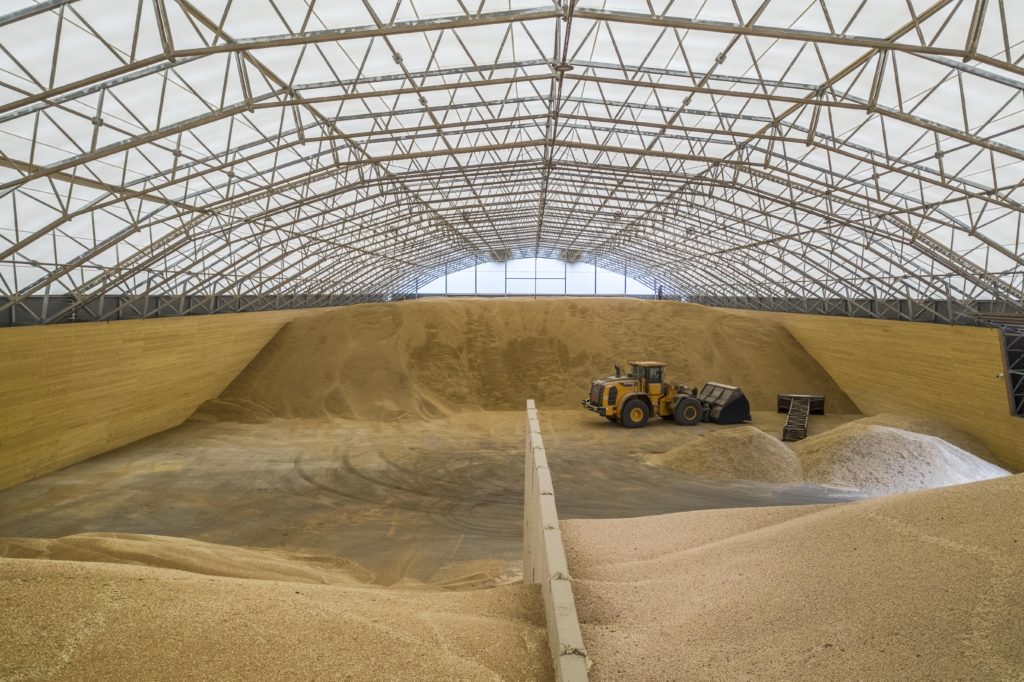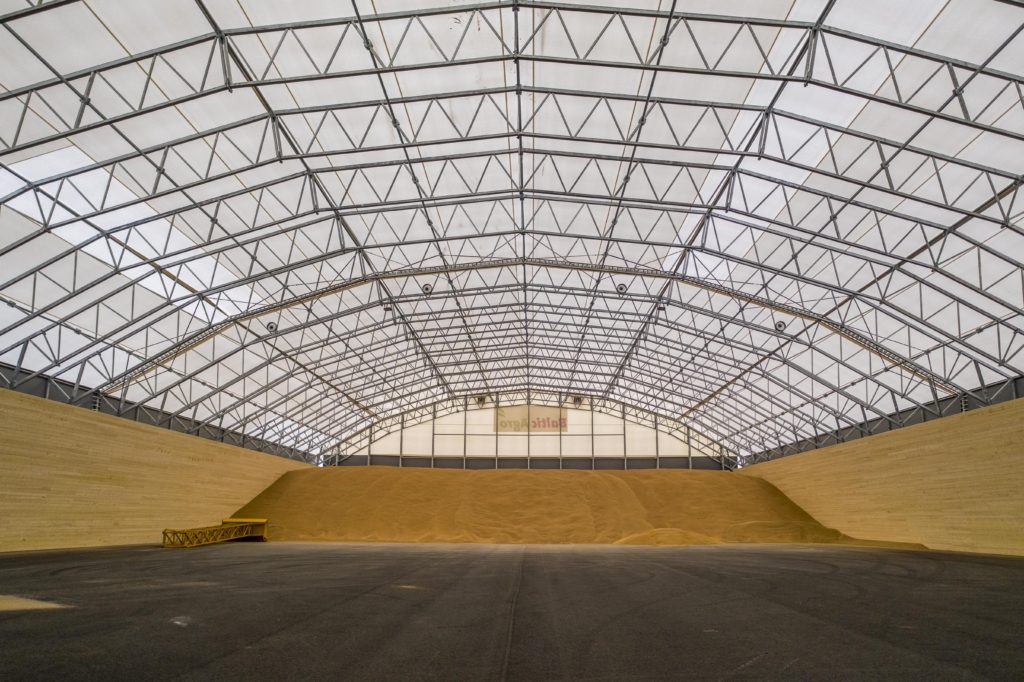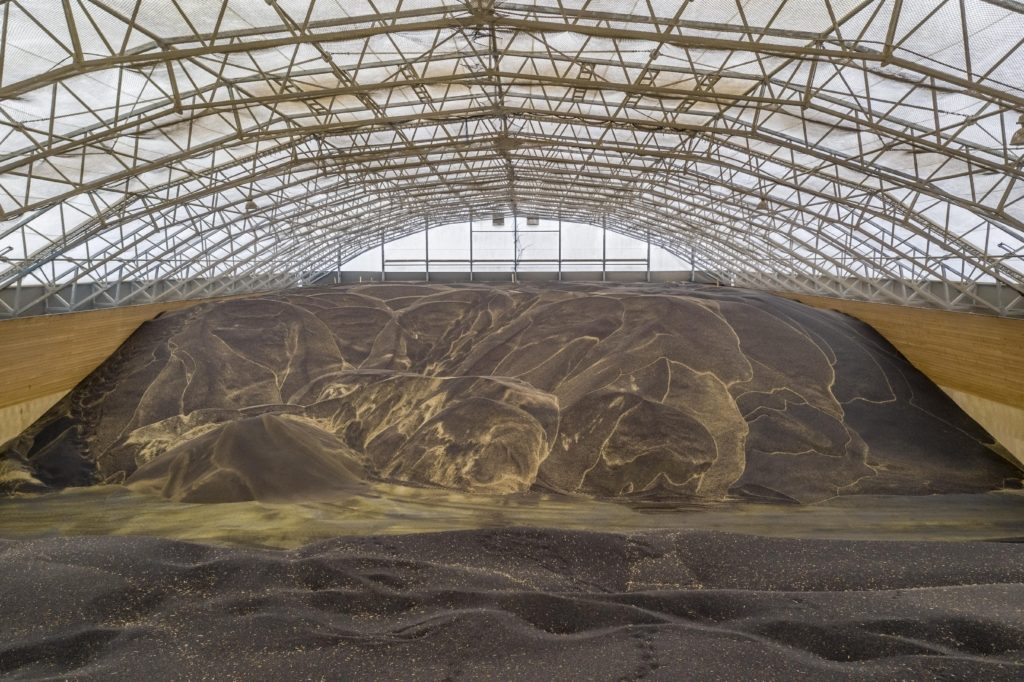By Finest-Hall
What is a bulk storage hall?
A bulk storage hall is a PVC hall or warehouse explicitly designed to store bulk material. The unique feature of the bulk warehouse is the structure. It’s intended to receive the load caused by bulk material and loaders. The walls of the bulk warehouse are covered from the inside, with wood, plywood, or concrete slabs. Bulk material can be stored in the warehouse up to a height of 5 meters.
What is a bulk storage hall suitable for? What to store in a bulk storage hall?
The bulk storage hall can store various loose materials such as sawdust, pellets, grain, rapeseed, rapeseed cake, peas, etc. If the internal walls are made of concrete slabs, fertilizer, salt, and other aggressive materials can be stored in bulk storage halls.

What are the advantages of a bulk storage hall over, for example, a concrete warehouse?
The main advantage is the overall cost of the warehouse, which is several times cheaper than a warehouse with concrete walls—secondly, the building speed. If there is a good asphalt site, the bulk warehouse can be installed directly on the asphalt, and there is no need to build any foundation.
How high to build the walls in the warehouse from wooden planks or other materials?
Internal walls can be built based on needs. In larger warehouses, the inner walls are installed up to 6m high because they use 12 meters long grain pusher blades to pile the material high up. If the customer doesn’t need to make such high piles, the internal walls can be built according to the need, which immediately reflects the lower cost.

What to keep in mind when purchasing bulk storage hall?
Firstly, it is necessary to verify whether getting a building permit for the planned location is possible. Then, if the building distance concerning other buildings is sufficient or if it’s necessary to provide specific fire safety measures.
When design conditions are issued, and it is possible to build, a 120 mm thick asphalt surface is suitable as a base. The surface base must be 6 meters longer and 4 meters wider than the planned building. It’s also necessary to know what material is intended to be stored in the warehouse and how high it will be piled/stored. This informs us what type and how high internal walls are needed. In addition, it is essential to know how much the stored material is afraid of moisture, so forced ventilation can be planned. It must be taken into account that the warehouse needs to be designed with an automatic fire signalisation system because, in general, most bulk materials have a very high fire load.
When should you consider dividing the PVC bulk storage hall into sections?
The building must be divided into sections if the area of one section exceeds 3800m² at a storage height of 5m. This is where fire safety requirements come into play, which excludes larger units without a firewall in place. For example, in the case of a 40×140 meter building, it is necessary to build a firewall in the middle and divide the building into two sections. However, suppose you want to store different materials in a building where the dust must not mix (for example, pellets and grain in the same building). In that case, it makes sense to design hermetic PVC partitions immediately. PVC partitions can easily be added later.
IMPORTANT TO KNOW
If bulk material (grain, pellets, sawdust, shavings, etc.) is stored in the building, the requirements for storage of bulk material established by the Rescue Board are decisive. The same requirements apply to the storage of flammable goods. In this case, the building’s optimal width versus length must be found to use each square meter of the building efficiently. Sometimes it is essential to divide the building into sections and separate them with a fire barrier. That allows flammable material to be stored in a larger area in larger quantities. Simultaneously, all kinds of sections, firewalls, and firewalls significantly increase the building’s price per square meter.
